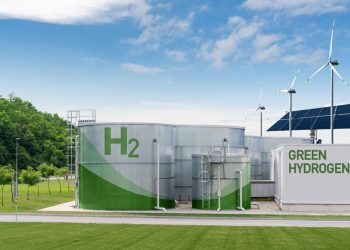
Namibia currently lacks the industrial infrastructure needed to achieve the goals set out in the Green Hydrogen and Derivatives Strategy, a new report by Dechema says.
The strategy outlines a production goal of 1 to 2 million tonnes of green hydrogen by 2030 and 10 to 15 million tonnes of green hydrogen equivalents by 2050.
According to the co-author of the report, Chokri Boumrifak, transportation infrastructure is very important as shipping green hydrogen can be expensive due to the energy-intensive processes required to convert it into a liquid state for transport.
He says focusing on products like ammonia, which can be transported in a liquid form and used directly in fertiliser or chemical production, can bypass this cost increase.
“Long-distance transportation becomes more feasible when conversion steps are reduced. Therefore, it becomes imperative to focus on products that can be further processed with higher value,” he says.
He further explained that most of Namibia’s green hydrogen projects will produce ammonia, which can be transported in a liquid form.
In these cases, it would be favourable to utilise ammonia as an intermediate for chemicals or fertilisers instead of cracking the compound to regain the hydrogen.
Despite currently higher green hydrogen production costs (US$4-9 per kg) compared to conventional methods (US$1-2.5 per kg), Namibia has a significant advantage.
The report says the country’s renewable energy potential can significantly lower electricity costs, a key factor in production efficiency.
The report further says Namibia’s photovoltaic potential ranges between 2,150 and 2,450 kWh/m2/a. The wind potential for the port areas Walvis Bay and Lüderitz are estimated to be 3,047 kWh/m2/a and 4,936 kWh/m²/a, respectively.
It is estimated that in 2030, around 227 kt of green hydrogen can be produced at Omaruru, Walvis Bay and Lüderitz together.
Dechema is a non-profit association with over 5,500 members that brings together experts from various fields to promote scientific exchange in relevant fields, while ISOE, a leading institute for sustainability research, focuses on solutions that consider ecological, social and economic conditions.







